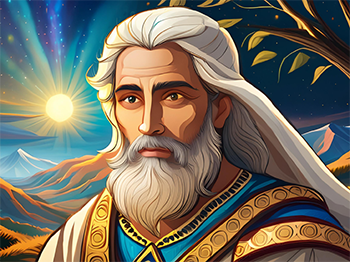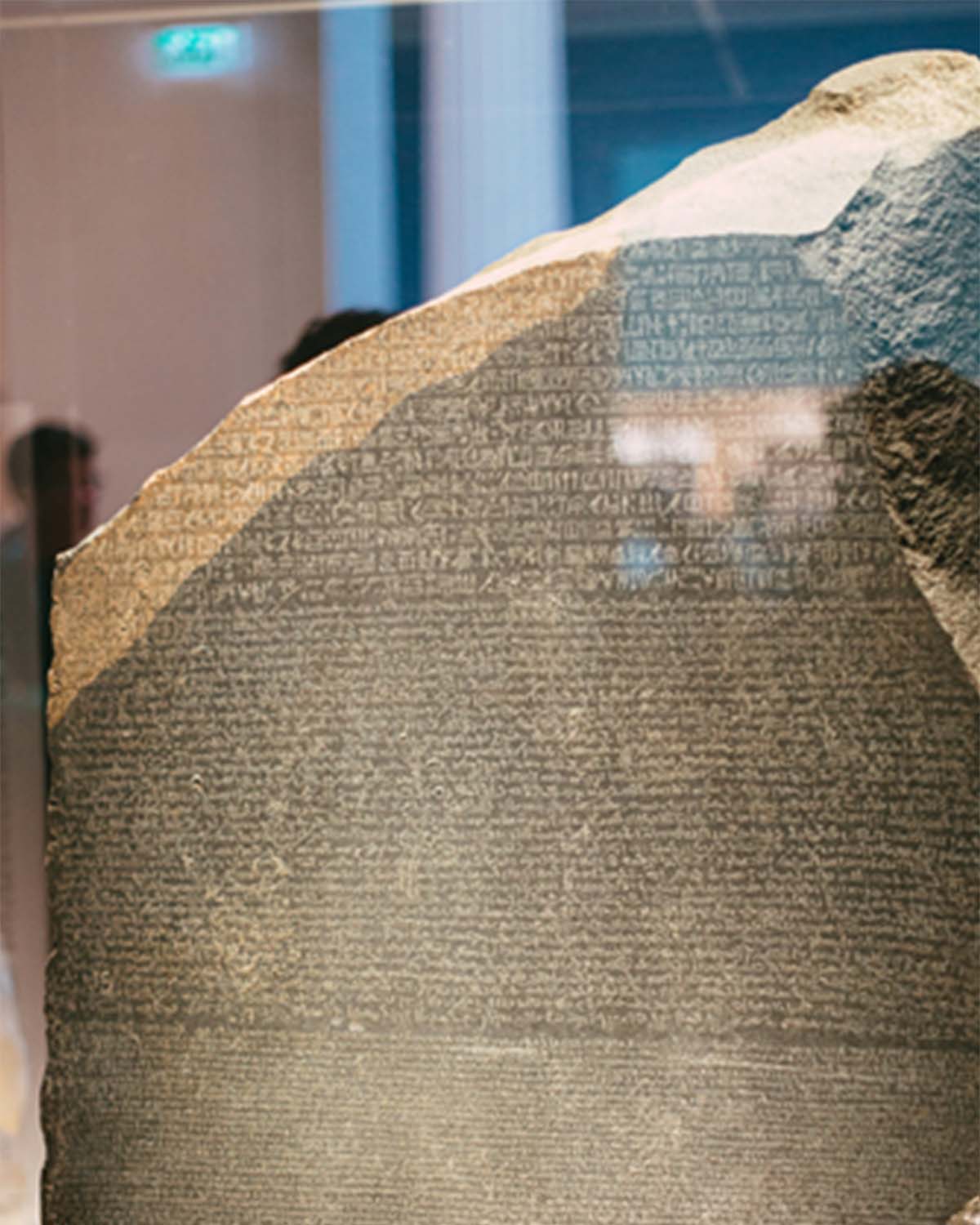
In 1947, a Bedouin shepherd named Muhammad (Ahmed el-Dhib) was searching for his lost goat and came upon a small opening of a cave. Thinking that his goat may have fallen into the cave, he threw rocks into the opening. Instead of hearing a startled goat, he heard the shattering of clay pottery. Lowering himself into the cave, he discovered several sealed jars. He opened them hoping to find treasure. To his disappointment, he found them to contain leather scrolls. He collected seven of the best scrolls and left the other fragments scattered on the ground.
Muhammad eventually brought some of the scrolls to a cobbler and antiquities dealer in Bethlehem named Khando. Khando, thinking the scrolls were written in Syriac, brought them to a Syrian Orthodox Archbishop named Mar (Athanasius) Samuel. Mar Samuel recognized that the scrolls were written in Hebrew and suspected they may be very ancient and valuable. He eventually had the scrolls examined by John Trevor at the American School of Oriental Research (ASOR). Trevor contacted the world’s foremost Middle East archaeologist, Dr. William Albright, and together these men confirmed the antiquity of the scrolls and dated them to sometime between the first and second century B.C.
After the initial discovery, archaeologists searched other nearby caves between 1952 and 1956. They found ten other caves that contained thousands of ancient documents as well. One of the greatest treasures of ancient manuscripts had been discovered: the Dead Sea Scrolls.
The Dead Sea Scrolls play a crucial role in assessing the accurate preservation of the Old Testament. With its hundreds of manuscripts from every book except Esther, detailed comparisons can be made with more recent texts.
The Old Testament that we use today is translated from what is called the Masoretic Text. The Masoretes were Jewish scholars who between A.D. 500 and 950 gave the Old Testament the form that we use today. Until the Dead Sea Scrolls were found in 1947, the oldest Hebrew text of the Old Testament was the Masoretic Aleppo Codex which dates to A.D. 935.
With the discovery of the Dead Sea Scrolls, we now had manuscripts that predated the Masoretic Text by about one thousand years. Scholars were anxious to see how the Dead Sea documents would match up with the Masoretic Text. If a significant amount of differences were found, we could conclude that our Old Testament Text had not been well preserved. Critics, along with religious groups such as Muslims and Mormons, often make the claim that the present day Old Testament has been corrupted and is not well preserved. According to these religious groups, this would explain the contradictions between the Old Testament and their religious teachings.
After years of careful study, it has been concluded that the Dead Sea Scrolls give substantial confirmation that our Old Testament has been accurately preserved. The scrolls were found to be almost identical to the Masoretic text. Hebrew Scholar Millar Burrows writes, “It is a matter of wonder that through something like one thousand years, the text underwent so little alteration. As I said in my first article on the scroll, ‘Herein lies its chief importance, supporting the fidelity of the Masoretic tradition.’”
A significant comparison study was conducted with the Isaiah Scroll written around 100 B.C. that was found among the Dead Sea documents and the book of Isaiah found in the Masoretic text. After much research, scholars found that the two texts were practically identical. Most variants were minor spelling differences, and none affected the meaning of the text.
One of the most respected Old Testament scholars, the late Gleason Archer, examined the two Isaiah scrolls found in Cave 1 and wrote, “Even though the two copies of Isaiah discovered in Qumran Cave 1 near the Dead Sea in 1947 were a thousand years earlier than the oldest dated manuscript previously known (A.D. 980), they proved to be word for word identical with our standard Hebrew Bible in more than 95 percent of the text. The five percent of variation consisted chiefly of obvious slips of the pen and variations in spelling.” Despite the thousand year gap, scholars found the Masoretic Text and Dead Sea Scrolls to be nearly identical. The Dead Sea Scrolls provide valuable evidence that the Old Testament had been accurately and carefully preserved.



